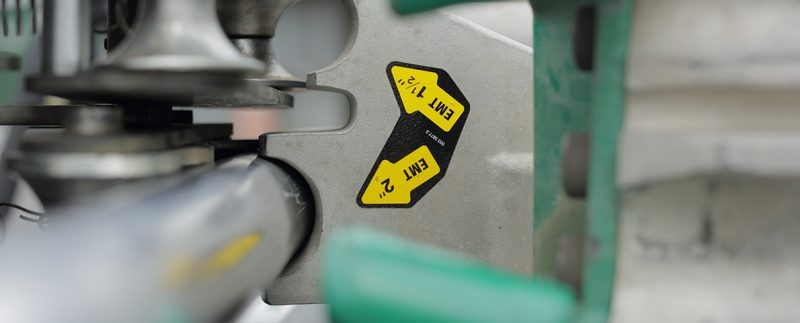You might be in the process of weighing the benefits of steel vs. aluminum EMT conduit. If you work in a volatile environment, there really is no choice. Aluminum is a much safer choice. Here are some reasons that’s the case, courtesy of the experts with American Conduit.
Corrosion Resistance
 One of the primary reasons aluminum conduit is safer in volatile environments is its natural corrosion resistance. In volatile settings, exposure to corrosive substances or moisture is often a significant concern. Steel conduit, while coated with a layer of zinc for corrosion protection, may still be vulnerable to rust and corrosion over time.
One of the primary reasons aluminum conduit is safer in volatile environments is its natural corrosion resistance. In volatile settings, exposure to corrosive substances or moisture is often a significant concern. Steel conduit, while coated with a layer of zinc for corrosion protection, may still be vulnerable to rust and corrosion over time.
Aluminum, on the other hand, forms a protective oxide layer on its surface when exposed to the atmosphere, which acts as a barrier, preventing further oxidation and protecting the conduit from corrosion. This corrosion resistance ensures the conduit remains structurally sound, reducing the risk of failure and electrical hazards in volatile environments.
Non-Sparking Properties
Aluminum is a non-ferrous, non-sparking material. It doesn’t produce sparks when struck or scraped against other metals. In volatile environments, such as those with flammable gases or dust, sparks can be dangerous. Sparks could ignite flammable substances, leading to explosions or fires. The non-sparking nature of aluminum conduit significantly enhances safety by eliminating the risk of spark-related incidents.
Lightweight Construction
Aluminum weighs much less than steel. This characteristic also contributes to safety in volatile environments, particularly in installations that require overhead or elevated conduit systems. Aluminum is much easier to install, dramatically reducing the chances of a potentially serious accident. In volatile environments, safety is critical. Minimizing physical strain and reducing the risk of installation-related incidents is crucial.
Fire Safety Benefits
Aluminum conduit offers excellent fire safety benefits. It is non-combustible and has a high melting point. In the event of a fire, aluminum conduit does not contribute to the flames and can help contain the spread of the fire, preventing further damage and hazards. This is especially valuable in volatile environments where fire safety is a primary concern.
Resistance to Environmental Factors
Extreme weather conditions, moisture, and hazardous substances often characterize volatile environments. Aluminum conduit’s resistance to environmental factors, such as UV radiation and temperature fluctuations, enhances its safety and longevity. It can withstand the rigors of these conditions, ensuring that the conduit remains protective and reliable, reducing the risk of electrical system failures due to exposure to the elements.
Protection from Electromagnetic Interference (EMI)
In sensitive environments, such as laboratories, manufacturing facilities, or data centers, electromagnetic interference (EMI) can disrupt the operation of sensitive electronic equipment. Minimizing EMI is essential to maintain the integrity and safety of these environments. Aluminum conduit’s non-magnetic characteristics help ensure the safety and reliability of electrical systems in such settings.
Compliance with Hazardous Location Standards
In locations classified as hazardous, such as those with potentially explosive contents, specific safety standards and regulations must be met. Aluminum conduit can be utilized with specialized coatings, such as aluminum rigid conduit with an organic polymer coating, to enhance safety in these environments. These coatings provide an extra layer of protection, reducing the risk of sparking or ignition.
Find out more about why the steel vs. aluminum EMT conduit fight is really no contest. Use our online content form or call American Conduit at 1-800-334-6825.

